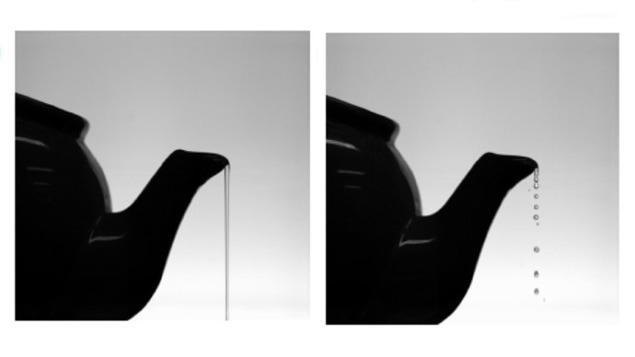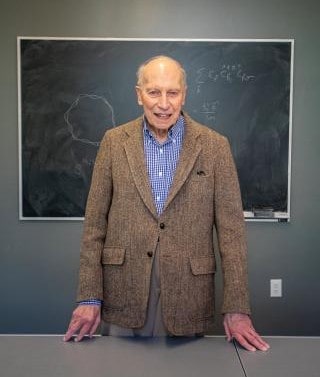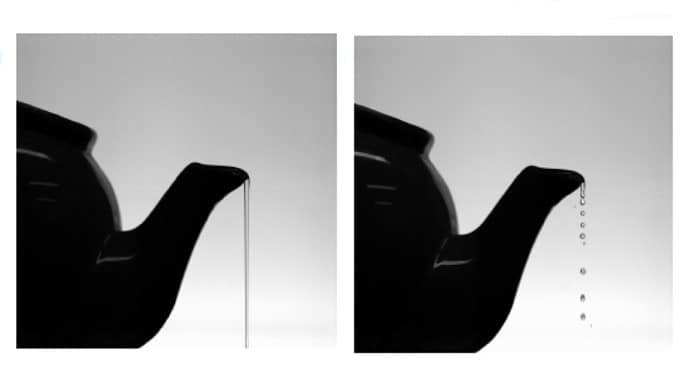
Despite the continuing impact of the COVID-19 pandemic, physicists still found time to carry out research that touched on the quirkier side of science. Here is our pick of the 10 best, not in any particular order.
Chicken slap down
Three years ago a Reddit user asked how many times you’d have to slap a frozen chicken to cook it. A bit of a mad question, but armed with a few assumptions (kinetic energy of a hand slap, heat capacity of a 1 kg chicken etc), US physics student Parker Ormonde worked out that it would take around 23 000 slaps to reach 205 °C. He also reckoned that to cook the chicken in a single slap your hand would need be travelling at about 1660 m/s. In January, Twitter user Aden took to the platform to show a “finite element” calculation of the slap in action. The simulation, which quickly went viral, shows a hand obliterating the chicken, which for a fraction of a second is presumably “cooked”. The simulation also reveals the hand shattering like glass, but if it was ever possible to thrust your hand at supersonic speeds it would probably get annihilated too. “The simulation is more or less accurate in this scenario,” notes Aden. “But even then, it should be taken with a grain of salt.” Perhaps with some rosemary or sage too?

Stamp of success
The US Postal Service issued a commemorative stamp honouring the Chinese-American physicist Chien-Shiung Wu in February. The 1957 Nobel Prize for Physics was shared by Chen Ning Yang and Tsung-Dao Lee “for their penetrating investigation of the so-called parity laws which has led to important discoveries regarding the elementary particles”. However, some physicists argue that Wu should have shared the prize for providing the experimental evidence for Lee and Yang’s theoretical prediction of parity violation. Wu now follows in the footsteps of Albert Einstein, Enrico Fermi, Richard Feynman and Maria Goeppert Mayer with a commemorative stamp. Just a shame it was never a Nobel too.
The case of the cubic poo
If there’s one mystery that has longed puzzled biologists, it is why wombat poo is not round but shaped like a cube? The thinking used to be that cubic faeces are formed during the act of defecation, with the wombats producing this shape to stop the poo from rolling away, thereby helping the animals to communicate. This year, however, physicist David Hu from Georgia Institute of Technology, along with colleagues in the US and Australia, discovered that wombat poo is cube-shaped thanks to the muscles that line the marsupial’s intestines. They do not have cylindrical symmetry but rather create two stiff and two flexible regions, which means that as the material moves through the intestines, rhythmical muscle contractions sculpt the poo into cubes. The team says its discovery could “have applications in manufacturing, clinical pathology and digestive health”. And where was the research published? Soft Matter, of course.
It’s in the air
Still on toilet troubles, researchers at Florida Atlantic University analysed how aerosols with the potential to carry disease are created and dispersed by flushing toilets and urinals. Siddhartha Verma and colleagues studied three scenarios – toilet flushing, covered toilet flushing and urinal flushing – in a public facility on the Florida campus. After three hours of tests and more than 100 flushes, the team detected droplets smaller than 3 mm in size at a height of 1.5 m above a toilet or urinal (face height for many people) and found that the droplets persisted at that height for more than 20 seconds after the flush. Unfortunately, closing the toilet lid before flushing did not do much to cut the number of particles detected – suggesting that aerosol particles can easily escape through gaps around the seat and lid. Maybe it’ll still be worth wearing facemasks once the pandemic is over.
Hawking hawking Hawking
When the Cambridge cosmologist Stephen Hawking died in 2018, he not only left a large scientific legacy but a hefty tax liability too. His archive, some personal belongings and the contents of his office at the University of Cambridge were acquired this year by the UK state via the Acceptance in Lieu scheme, which allows families to offset tax. The office contents – including Hawking’s books, blackboards, coffeemaker and medals – headed to the Science Museum in London to settle a £1.4m tax debt. The archive, meanwhile, which features television scripts from The Simpsons in which Hawking appeared, went to Cambridge University Library to settle a £2.8m tax liability. The Science Museum, which will also get six of Hawking’s wheelchairs, says it will display some of the items in 2022. It also plans to recreate Hawking’s office.
Space-aged wine
Of all the things you could do with a dozen bottles of fine red Bordeaux wine, sending them into space might seem the least sensible, especially when they cost a couple of thousand pounds a pop. But that’s exactly what researchers did back in November 2019, when they placed a crate of Château Pétrus 2000 onto the International Space Station (ISS). After spending 14 months circling the globe in microgravity conditions, the bottles thankfully returned back home in one piece in January, when they were dispatched to the Institute of Vine and Wine Science at the University of Bordeaux for chemical analysis. A blind sampling of one of the bottles by 12 connoisseurs revealed this year that the wine had developed “heightened floral characteristics” on its journey into space and was one to three years further “evolved” compared with a bottle that had stayed firmly on the ground. The team now plans to take a closer look at the biochemical properties of the wine after its space jaunt – followed, of course, by more tasting.
Flippin’ science
If you’re worried about meeting up with friends after yet another lockdown, you could always just sit in the pub on your own and ponder the physics of beer mats. Unlike a Frisbee flying disc, you’ll find that if you throw one of these cardboard coasters, it’ll flip over as it spins through the air. Now, using a combination of computer simulations and experiments, three physicists from the University of Bonn in Germany have worked out why this is. They found that a lifting force acts on the forward edge of a spinning disc, causing it to flip over. Frisbees, in contrast, don’t suffer from this instability because of their thick edges. So if your friends do turn up, you’ve now got something apart from coronavirus to talk about.

Scientific Olympians
The Tokyo 2020 Olympics, held in July and August, was full of breath-taking displays of human endeavour – including some incredible efforts by physicists and mathematicians. In the swimming pool, US breast stroker Andrew Wilson – who was about to start a PhD on mathematical modelling and scientific computing at the University of Oxford – bagged gold in the 400 m medley relay. In cycling, Anna Kiesenhofer of Austria, who is doing a maths postdoc at the Ecole Polytechnique Federale de Lausanne, won gold in the road race. Meanwhile, in athletics, Irish runner Louise Shanahan, who is doing a PhD in atomic, mesoscopic and optical physics at the University of Cambridge, competed in the 800 m race. Shanahan had been forced to put her studies at Cambridge on hold to qualify for the Olympics, which she did by completing races in the Czech Republic and Switzerland and by winning the Irish national championships. Sadly, she was eliminated in the first heat in Tokyo, but Shanahan can now look forward to completing her PhD – a task that she describes as “much more manageable” than training while studying for her bachelor’s degree back home in Ireland.
Dribbling teapots revisited
Researchers in Austria and the UK claimed in September to have finally formulated a “complete” theory of the dribbling teapot effect – one that considers the inertial, viscous and capillary forces at play when a drop forms at the edge of the teapot spout that then wets the underside of it. By carrying out experiments – presumably by drinking lots of tea – they confirmed their theoretical analysis, finding that the liquid trickles down the underside of the teapot spout when poured slowly but not when poured at a faster rate. The end of tea-stained tablecloths could be in sight.

Ageless physicist
And finally, ending somewhat on an uplifting note. Manfred Steiner is proof, if any were needed, that you’re never too old to follow your dreams. Growing up in his native Austria, he loved physics but listened to his family, not his heart, by studying medicine instead. Steiner qualified in 1955 from the University of Vienna before moving to the US where he had a distinguished career in haematology, eventually retiring in 2000. With a bit more time on his hands, Steiner decided to rekindle his passion for physics and enrolled as a part-time undergraduate student at Brown University in the US, graduating in 2007. Still wanting more, he started a PhD and finally defended his thesis in September aged 89. Entitled “Corrections to the geometrical interpretation of bosonization”, it was not even Steiner’s first PhD as he had got a doctorate in biochemistry from the Massachusetts Institute of Technology in 1967. “It is important not to waste your older days,” Steiner insists. “There is a lot of brainpower in older people and I think it can be of enormous benefit to younger generations.”
You can be sure that next year will throw up its fair share of quirky stories from the world of physics. See you next year!
